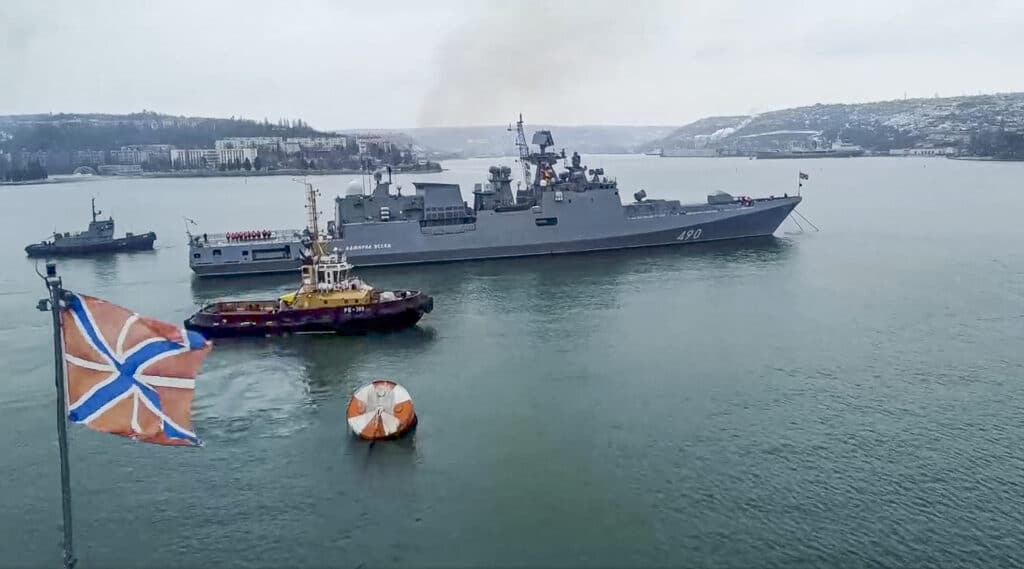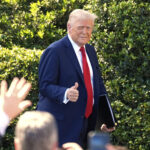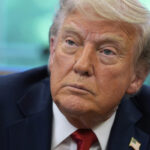The conflict between the West and Russia continues to escalate, as the Biden administration and NATO told Russia they are not giving in to Russia’s demands regarding Ukraine. Russian officials have warned that Moscow would quickly take “retaliatory measures” if the U.S. and its allies reject its demands. The Associated Press has the story:
Russia-Ukraine crisis just escalated
WASHINGTON (AP) — The Biden administration and NATO told Russia on Wednesday there will be no U.S. or NATO concessions on Moscow’s main demands to resolve the crisis over Ukraine.
In separate written responses delivered to the Russians, the U.S. and NATO held firm to the alliance’s open-door policy for membership, rejected a demand to permanently ban Ukraine from joining, and said allied deployments of troops and military equipment in Eastern Europe are nonnegotiable.
“There is no change, there will be no change,” Secretary of State Antony Blinken said. Also not up for negotiation will be the U.S. and European response to any Russian invasion of Ukraine, he said, repeating the mantra that any such incursion would be met with massive consequences and severe economic costs.
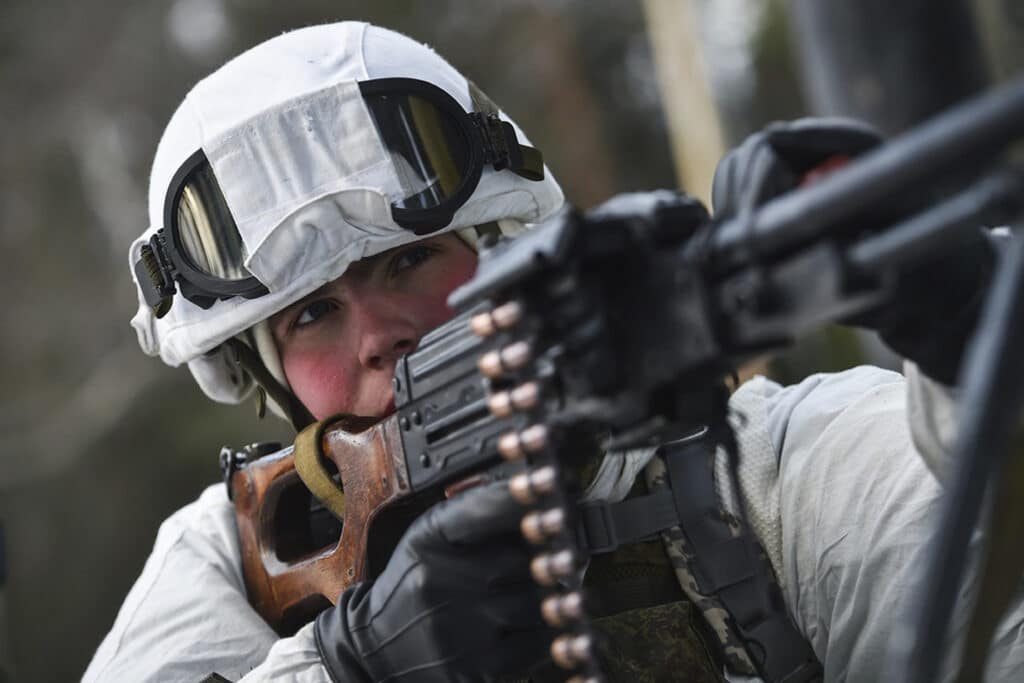
The responses were not unexpected and mirrored what senior U.S. and NATO officials have been saying for weeks. Nonetheless, they and the eventual Russian reaction to them could determine whether Europe will again be plunged into war.
There was no immediate response from Russia but Russian officials have warned that Moscow would quickly take “retaliatory measures” if the U.S. and its allies reject its demands.
Seeking possible off-ramps that would allow Russia to withdraw the estimated 100,000 troops it has deployed near Ukraine’s border without appearing to have lost a battle of wills, the U.S. response did outline areas in which some of Russia’s concerns might be addressed provided it de-escalates tensions with Ukraine.
Speaking to reporters in Washington, Blinken said Russia would not be surprised by the contents of the several page American document that U.S. Ambassador to Russia John Sullivan delivered to the Russian foreign ministry on Wednesday.
“All told it sets out a serious diplomatic path forward. should Russia choose it,” he said. “The document we’ve delivered includes concerns of the United States and our allies and partners about Russia’s actions that undermine security, a principled and pragmatic evaluation of the concerns that Russia has raised, and our own proposals for areas where we may be able to find common ground.”
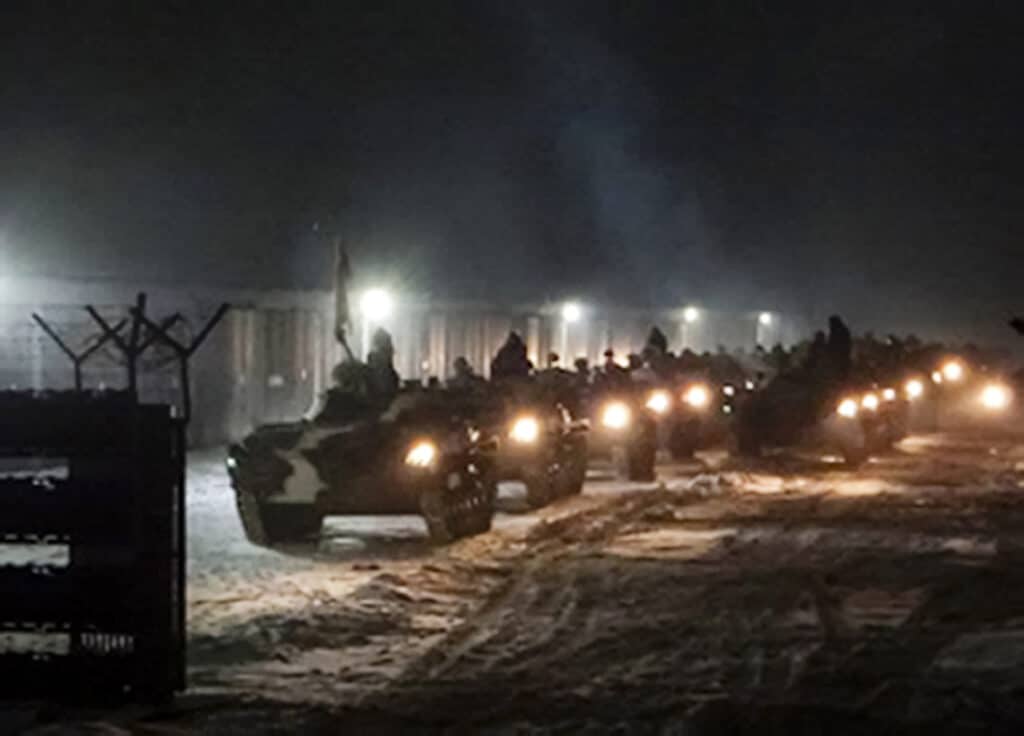
Blinken said he hoped to speak with Russian Foreign Minister Sergey Lavrov about the response in the coming days. But he stressed that the decision about pursuing diplomacy or conflict rests with Russia and more specifically with Russian President Vladimir Putin.
“We’ll see how they respond,” he said. “But there’s no doubt in my mind that if Russia were to approach this seriously and in a spirit of reciprocity with a determination to enhance collective security for all of us, there are very positive things in this in this document that could be pursued. We can’t make that decision for President Putin.”
Shortly after Blinken spoke, NATO Secretary-General Jens Stoltenberg said in Brussels that the alliance had sent a separate reply to Russia with an offer to improve communications, examine ways to avoid military incidents or accidents, and discuss arms control. But, like Blinken, he rejected any attempt to halt membership.
“We cannot and will not compromise on the principles on which the security of our alliance, and security in Europe and North America rest,” Stoltenberg said. “This is about respecting nations and their right to choose their own path.”
“Russia should refrain from coercive force posturing, aggressive rhetoric and malign activities directed against allies and other nations. Russia should also withdraw its forces from Ukraine, Georgia, and Moldova where they are deployed without these countries’ consent,” he said.
While flatly refusing to consider any changes to NATO’s open-door policy, its relationship with non-ally Ukraine, or allied troop and military deployments in Eastern Europe, Blinken said the U.S. is open to other ideas to ease Russia’s stated concerns.
The U.S. proposals, echoed in the NATO document, include the potential for negotiations over offensive missile placements and military exercises in Eastern Europe as well as broad arms control agreements as long as Russia withdraws its troops from the Ukrainian border and agrees to halt inflammatory rhetoric designed to deepen divisions and discord among the allies and within Ukraine itself.
Moscow has demanded guarantees that NATO will never admit Ukraine and other ex-Soviet nations as members and that the alliance will roll back troop deployments in former Soviet bloc nations. Some of these, like the membership pledge, are nonstarters for the U.S. and its allies, creating a seemingly intractable stalemate that many fear can only end in a war.
The Kremlin has repeatedly denied it has plans to attack Ukraine, but the U.S. and NATO are worried about Russia massing its troops near Ukraine and conducting a series of sweeping military maneuvers.
As part of the drills, motorized infantry and artillery units in southwestern Russia practiced firing live ammunition, warplanes in Kaliningrad on the Baltic Sea performed bombing runs, dozens of warships sailed for training exercises in the Black Sea and the Arctic, and Russian fighter jets and paratroopers arrived in Belarus for joint war games.
Speaking to Russian lawmakers on Wednesday before the U.S. and NATO responses were delivered, Lavrov said he and other top officials will advise Putin on the next steps after receiving the U.S. reply.
“If the West continues its aggressive course, Moscow will take the necessary retaliatory measures,” Lavrov said.
But he indicated Russia wouldn’t wait forever. “We won’t allow our proposals to be drowned in endless discussions,” he said.
In another development, presidential advisers from Russia, Ukraine, France and Germany met for more than five hours in Paris on Wednesday over the long-running conflict in the eastern part of the country between Moscow-backed separatists. Although there was no breakthrough, they promised to meet for new talks in two weeks in Berlin.
The French president’s office said in a statement after the talks that the parties support “unconditional respect” for a cease-fire in eastern Ukraine.
The talks focused on the 2015 Minsk peace agreement aimed at ending the conflict, and the statement didn’t address the current concerns about a Russian invasion.
Ukrainian representative Andriy Yermak said the meeting went hours longer than expected and marked the first real advance in talks since December 2019. He said the talked organized by the French and Germans were crucial “even when things were not so tense and now we know it more than ever.”
By VLADIMIR ISACHENKOV and MATTHEW LEE
Isachenkov reported from Moscow. Yuras Karmanau in Kyiv, Ukraine, and Lorne Cook in Brussels contributed.

